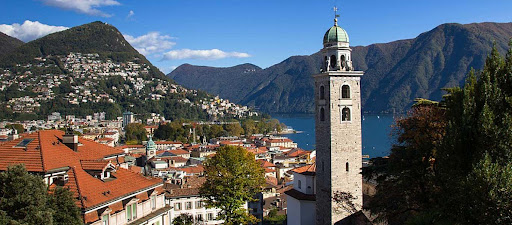I left the French-speaking city of Geneva at dawn, exhausted. I switched trains in Zurich at lunchtime and mumbled through my rusty grammar-school-level German. I crossed the Saint-Gotthard Massif, once a formidable barrier separating northern and southern Europe, a few hours to the south. After passing through the longest railway tunnel in the world, I arrived in Ticino, Switzerland’s only Italian-speaking canton, on a balmy summer afternoon.
It became abundantly clear after spending just a few hours in the resort town of Locarno, which is just six miles from the Italian border, that Ticino’s reputation as the sunniest canton was completely justified with Escort Tessin. Thanks to it, we have a soft Mediterranean vibe. However, that was not my goal. After spending too much time in New York, I missed Alpine meadows, ancient forests, and the rural Swiss landscape. I found vivid evidence of an ancient mountain people’s persistent struggle against their rocky environment.
Some steps plan for taking a trip around the world.
You don’t get comfortable in Val Maggia. You enter a vastly different landscape at the next road turn: Silvery cliffs drop about 70 feet below Ponte Brolla, preventing the emerald-green water from rushing into deep, tranquil pools. It turns out that this is where several hikes start and where a cliff-diving championship is held. The weather changed quickly, and nature changed into a darker, more sinister costume as I drove. The vertical rock appeared to reflect the ominous clouds everywhere, in the prehistoric landslides that have shaped this land’s history, the traditional stone roofing tiles, the towering promontory that surrounds the valley, and in the valley itself. Its inhabitants have carved their lives into the numerous massive boulders and caves because of this.
Hamlet of Cevio Vecchio
I climbed stone, moss, and the odd palm tree in the hamlet of Cevio Vecchio to more than 60 “grottos,” which are ancient caves carved into the rock. The caves that Sex in Tessin have the proper humidity levels to allow the population to store wine, cured meats, and local cheese, thanks to a natural ventilation system. After some time, individuals got into the propensity for getting out of tables and sitting in front of the cave to drink nearby wine and have some food. The modern-day grotty, open-air eateries serving local specialties resulted from this practice.
“Life here was so harsh in those times, like a bad life,” said Flavio Zappa, a historian, and guide, over risotto that night said, “that starting in the 1850s and until World War I, waves of emigration led to generations of men to Australia and California.” Some settled there, like the Lafranchi family of every Nicasio Valley Cheese in Marin County. Then the Others came back and built the many “palazzi di emigrate,”
The following day, Zappa unlocked the heavy wooden door of Santa Maria Delle Grazie, a church that appeared to be simple, as though he were opening the cave of Ali Baba. It had floor-to-ceiling Renaissance frescoes telling the story of Mary and a whole series of ex-votos commissioned by locals to honor the Madonna. It was only about 20 minutes on foot from Maggia.
The wind picked up, so I decided not to take the cable car to the Robièi area near the Basdino glacier: A frontal storm was approaching. Soon, the peaks were obscured by fog, and a torrential downpour forced me to retreat to a nearby cafe for shelter. A kind of end-of-the-world weather,” a fellow traveler said as she settled into a comfortable armchair.
Conclusion
The Ticinese people cannot be bundled up into that same basket. There are tiny villages, suburbs, and small cities in the Ticino valley.
Most people in the villages live very modestly. Some are farmers and shepherds that live with very little technology. It is cool to go up the mountains and visit some of these villages. The landscape is breathtaking, and the people are super friendly.
People in the regular towns are mostly typical Swiss people, except for the fact that they have dialects. Less than a thousand people speak some dialects, and the next village will have a different dialect. Quite interesting, but aside from nothing atypical of any other Swiss town. Maybe they cook a bit better, but that’s it.
